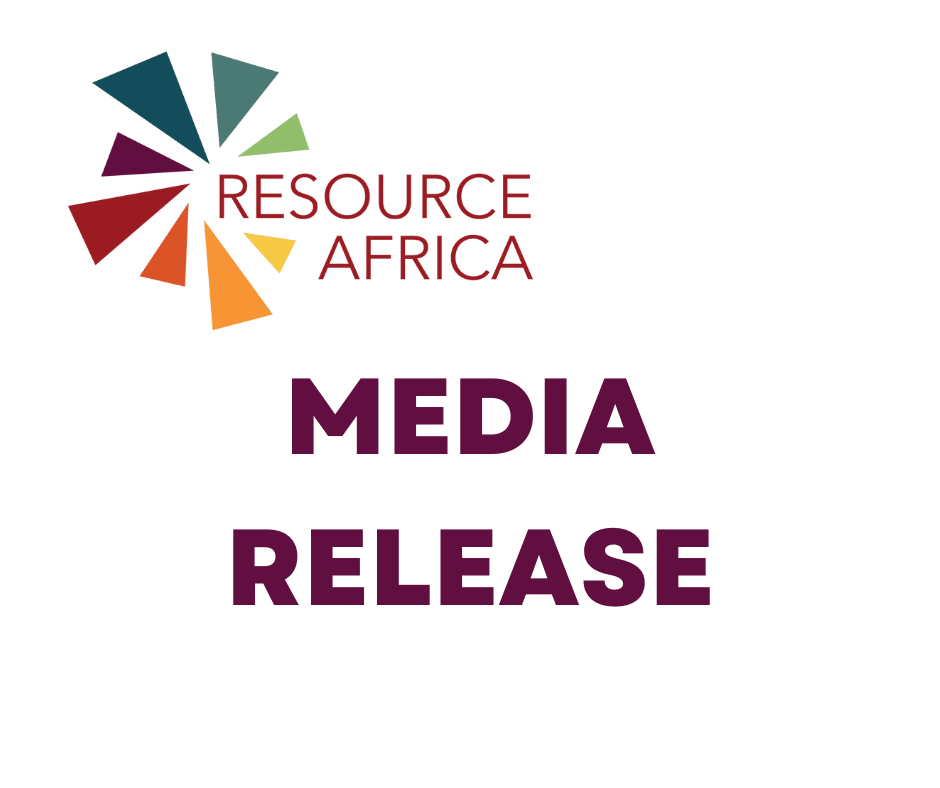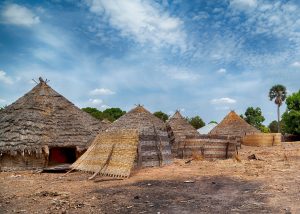MEDIA RELEASE: Animal protectionists trying to undermine the South African Constitution by influencing key government White Paper
21 September 2022
For Immediate Release
Animal protectionists trying to undermine the South African Constitution by influencing key government White Paper
- The government has invited public comment on its Draft White Paper on Conservation and Sustainable Use of South Africa’s Biodiversity and the Draft Game Meat Strategy for South Africa. Resource Africa made a formal submission that includes the points made here.
- The sustainable use of natural resources is clearly enshrined in the constitution and referenced in international and African declarations, but this could be undermined by animal protectionist groups.
- South African indigenous and local community leaders are reminding government of their rights to the sustainable use of biodiversity.
- The document in its current form, ignores community-led conservation as a model adopted in other African countries – missing an opportunity to fully support a growing wildlife economy.
- Unscientific polls on trophy hunting and tourism by lobby groups are contrasted with a scientific survey that finds widespread support for trophy hunting, especially among Africans and conservation experts.
The Department of Forestry, Fisheries and the Environment (DFFE) has recently made a number of attempts to reconcile competing views within and beyond South Africa on the issue of sustainable use of biodiversity.
The latest such attempt is in the form of the Draft White Paper on Conservation and Sustainable Use of South Africa’s Biodiversity and the related Draft Game Meat Strategy for South Africa. These documents reveal that there is still no real clarity on the issue, particularly as it relates community rights to their natural resources.
Lobbying attempts by anti-hunting campaigners, based on questionable opinion polls have further muddied the waters, especially when it comes to hunting animals as one form of sustainable use that could benefit local communities as part of community conservation.
National and international laws that support community rights to sustainable use
Despite the campaigners’ attempts to create national turmoil, the overarching concept of sustainable use of biodiversity is enshrined in the South African Constitution and well supported globally. Article 24(b) of the Constitution is clear that all South Africans have the right to “secure ecologically sustainable development and use of natural resources while promoting justifiable economic and social development.”
These natural resources include plants and animals. Any policies that undermine this use would therefore be unconstitutional.
Internationally, the UN Convention on Biological Diversity (CBD) includes sustainable use in its core objectives, while the Intergovernmental Science-Policy Platform on Biodiversity and Ecosystem Services (IPBES) recently released a report on the subject. The IPBES report highlighted that poor and vulnerable people are most directly reliant on biodiversity and should therefore be prioritised as key stakeholders when developing policies on sustainable use.
As one of the most socio-economically unequal countries in the world, South Africa should be especially concerned about uplifting its most vulnerable people.
South African indigenous communities are concerned about the impact of the Draft White Paper, in its current form, on their rights and livelihoods.
The Chairman of the National Khoisan Council, Mr. Cecil le Fleur, weighed in on Resource Africa’s submission on the White Paper: “I would like to remind the South African government that the United Nations Declaration on the Rights of Indigenous Peoples was a hard fought for legal framework affirming our rights.”
Section 32(1) of this Declaration states that indigenous people must be free: “To determine and develop their own priorities and strategies for the development and use of their lands, territories and other resources”.
Mr Barend Salomo, a member of the Wupperthal Rooibos community that is reliant on sustainable use of biodiversity says they support laws that affirm the legal principle of sustainable use of biodiversity.
“Any policies that undermine this right would affect our livelihoods,” Mr. Salomo explained.
This Khoisan community, along with 40 other indigenous communities, was recently able to secure their first levy on revenues earned by the rooibos industry, on the basis of a benefit sharing agreement, derived from the uses of the rooibos plant.
In a similar vein, pan-African declarations and resolutions call for governments to create policy mechanisms that allow local communities to benefit from the sustainable use of biodiversity. The African Commission on Human and Peoples’ Rights Resolution 489 “calls on African States to recognise the rights of indigenous populations and communities over the conservation, control, management and sustainable use of their natural resources including wildlife.”
Similarly, the Kigali Call to Action produced during the first African Protected Areas Congress, held in Kigali, Rwanda in June, calls for: “Promotion of truly sustainable use of natural resources and investment in building an appropriate wildlife economy, through rights-based approaches and with the involvement of rights-holders and stakeholders.”
An opportunity to develop community-led conservation in South Africa
The new Draft White Paper and Game Meat Strategy offer an opportunity for South Africa to incorporate the internationally respected IPBES findings and recent developments in Africa to stay at the leading edge of conservation.
Further, several of South Africa’s neighbours have successfully implemented sustainable use within the context of community-based natural resource management (CBNRM) on communal lands. The different policy approaches and achievements of CBNRM in Botswana, Namibia and Zimbabwe would provide a rich source of ideas for South African policies.
The Community Leaders Network of Southern Africa (CLN), which represents communities in nine countries in the region including in South Africa, aims to share the knowledge gained from nations where CBNRM is well established with those that have not yet adopted the approach.
Namibian Maxi Pia Louis, who hosts the Secretariat of CLN, said: “We have hosted many delegations from other countries to show them how CBNRM works in Namibia, and believe that some of the lessons we have learned could apply to South Africa too.”
In its current form, the Draft White Paper does not reference global and pan-African developments or consider a CBNRM approach, thus missing an opportunity to develop a policy that fully supports a growing wildlife economy. The Game Meat Strategy is more useful in this regard, as it presents a tangible plan for increasing the production and consumption of game meat while creating a transformed and inclusive industry. The Draft White Paper should provide a framework into which the Game Meat Strategy and other strategies focusing on different parts of the wildlife economy can easily fit.
Animal protectionists trying to influence South African policies
The Draft White Paper is an extension of the High Level Panel process, whereby the DFFE sought consensus on ways to manage rhino, leopard, elephant and lion in South Africa. As with that effort, the Draft White Paper fails to achieve such consensus and contains ideas that are clearly opposed to each other – animal protectionism and sustainable use.
Animal protectionists are fundamentally opposed to the use of wild animals for any reason, but especially for so-called trophy hunting. This puts them at cross-purposes with the sustainable use aspects of the Draft White Paper and Game Meat Strategy and the global and African conventions and statements alluded to above.
Given their weak legal position, animal protection lobby groups resort to populist approaches – such as highly emotive anti-hunting campaigns – to try and derail sustainable use policies.
As an example of this, a recent poll run by World Animal Protection (WAP) attempts to suggest that two forms of sustainable use – photographic and hunting tourism – are incompatible.
One of the poll results states: “79% UK tourists agreed that making trophy hunting a key pillar of policy will damage South Africa’s reputation”. Yet trophy hunting has been a key part of South Africa’s conservation policy for many decades – indicating that the people answering this poll were misled into thinking that the government is only now considering such a move.
Polls run by lobby groups such as WAP and Humane Society International (HSI) are created to support their views.
As any social scientist could explain, the way in which surveys are done, the sample size used and types of questions that are asked greatly influence the outcome.
This is why scientific papers based on questionnaire surveys clearly indicate all of these and other factors that could potentially affect their results.
The scientific peer review process then checks the survey for indicators of authors trying to manipulate their results and rejects faulty surveys. Neither WAP nor HSI’s surveys have been submitted to the peer review process.
By contrast, a recent peer-reviewed study revealed that 76% of 5,699 respondents supported trophy hunting, and that location, demography and conservation background influenced their views on the subject. In this study, Africans, North Americans and people with conservation backgrounds (regardless of where they are from) were more likely to support trophy hunting than Europeans and non-conservationists.
It is advisable to attach more significance to surveys published in scientific journals than to misleading popular polls run by special interest groups.
However, the negative impact of popular polls is amplified through the media and therefore cannot be ignored entirely. One example of this is a deliberate attempt to set up photographic tourism against hunting tourism by creating a false choice between the two industries.
In reality, these industries have coexisted for decades in Southern Africa and there is no reason to favour one over the other.
South Africa can look to a neighbouring country for an example of how to deal with these different industries. Many Namibian communities that are engaged in CBNRM enter into agreements with both photographic and hunting tourism operators to maximise their income from the sustainable use of their natural resources.
Many of them use plant resources in the same way, by tapping into different markets for different products.
Rather than one industry competing against another, all possible industries are used to maximise the income generated and jobs created.
A sound policy framework should allow people to use plants and animals in several different ways that are aimed at different markets, thus creating a resilient and vibrant wildlife economy.
South Africa is a biologically and culturally diverse country that can capitalise on this competitive advantage by ensuring that natural diversity translates into economic diversity.
A robust framework, alongside pragmatic strategies for each sub-industry (following the example set for game meat), would include more South Africans in the wildlife economy, thus creating jobs, increasing economic resilience and ultimately supporting sustainable development.
By Resource Africa Southern Africa (RASA)



